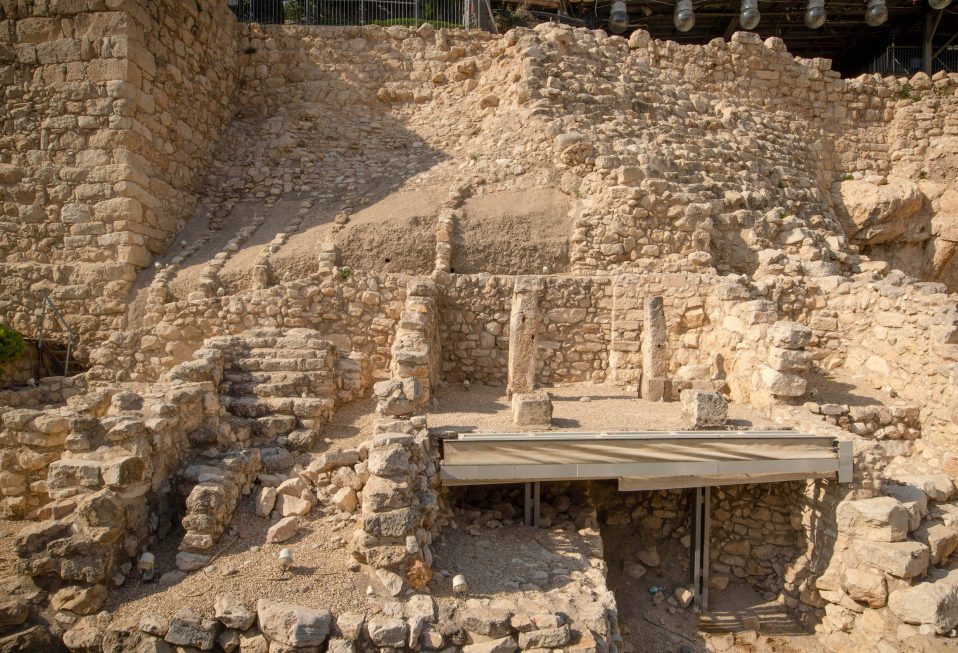By Marc Turnage
The first seven and a half years that David reigned, he reigned in Hebron, which sat in the heart of the tribal territory of Judah, David’s tribe (2 Samuel 5:5). As he expanded his rule to all of Israel, he decided to conquer the city of Jerusalem, which until this time was ruled by the Jebusites (2 Samuel 5:6-10). Why did David select this city?
Geographically it sat off the major north-south route through the central hill country; it did not have natural roads leading east or west from it. He selected it, however, due to its location. The city, on its southern end, was bounded by the Hinnom Valley, which formed the boundary between the tribal territory of Benjamin (Saul’s tribe) and Judah (David’s tribe). Also, by virtue of it not being captured by the Israelites, no tribe could lay exclusive claim to the city. It offered a place where he could consolidate the political and religious center of his kingdom.
The city of Jerusalem that David conquered covered about eleven acres. It sat on what is known as the eastern hill. To its east, stood the Mount of Olives, which is separated from the eastern hill by the Kidron Valley. To its west stands the western hill, which is separated from the eastern hill by a valley known as the Tyrpoean Valley. To its south lies the Hinnom Valley. To its north lay the upper heights of the eastern hill, where Solomon built his palace and the Temple.
The Bible identifies the eastern hill, specifically the northern portions, as Mount Zion. This can be confusing for modern visitors to Jerusalem because in the Byzantine period (4th-6th centuries A.D.) the western hill was mistakenly identified as Mount Zion, and that nomenclature has stuck. In the Bible, however, the eastern hill, especially its northern area, where the Temple came to be built, was referred to as Mount Zion.
Today, the eastern hill sits outside of the Old City walls, even though it is the oldest part of Jerusalem. It is referred to as the City of David. As we hear in Psalm 125, the mountains surround Jerusalem; while the psalm brings to our minds the beautiful image of God surrounding his people, strategically, this was to Jerusalem’s detriment. On all sides of the eastern hill, hills higher than it surround it. So why was the city built here? Because of its water source, the Gihon Spring. This karstic spring continues to flow even today. Recent excavations have uncovered a large fortification built around the spring to protect it.
Excavations of the City of David have uncovered remains dating back over four thousand years. The excavations of the City of David reflect the history of the city; its role as the capital of the kingdom of Judah; its destruction by the Babylonians; its smaller size in the days of Ezra and Nehemiah. Its water systems. Structures from the first century, and evidence of its destruction by the Romans in A.D. 70. It was here that the exiles remembered when they were dispersed and longed to return (Psalm 137).
Marc Turnage is President/CEO of Biblical Expeditions. He is an authority on ancient Judaism and Christian origins. He has published widely for both academic and popular audiences. His most recent book, Windows into the Bible, was named by Outreach Magazine as one of its top 100 Christian living resources. Marc is a widely sought-after speaker and a gifted teacher. He has been guiding groups to the lands of the Bible—Israel, Jordan, Egypt, Turkey, Greece, and Italy—for over twenty years.
Website: WITBUniversity.com
Facebook: @witbuniversity
Podcast: Windows into the Bible Podcast




Post a comment